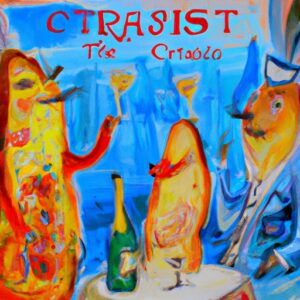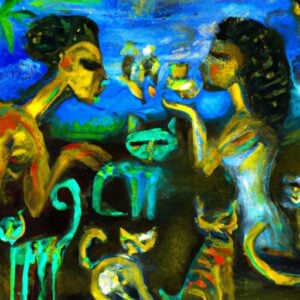“Buonasera, signorina, buonasera / Come è bello stare a Napoli e sognar…“
Ever heard this song? It’s “Buonasera (signorina)” by Fred Buscaglione, and it is the perfect song to remember today’s topic: how do you translate “good evening” to Italian?
If you go to Italy, you’ll likely hear that a lot, anytime from 6 pm to the next morning. And you’ll also want to know how to reply politely.
So, as usual, here’s everything you need to know.
How to Say Good Evening in Italian?
As you may have guessed, the right phrase to wish someone a good evening in Italian is: buonasera.
It is pronounced “bwo-nah say-rah” and it can be used both in formal and informal situations.
Buonasera, signora Rossi. Come sta suo figlio?
Good evening, mrs. Rossi. How is your son?
Ehi Mario, buonasera! Dove stai andando?
Hey, good evening Mario! Where are you going?
Buonasera is used mostly when greeting someone, but it can be used even to say goodbye. However, when partying ways, most Italians prefer to use a slight variation: buona serata.
Ok, è ora di andare. Buona serata, ragazzi!
Ok, time to go. Have a nice evening, guys!
I see that some other blogs about learning Italian write Buona sera as 2 separate words (buona sera), but that is a misconception.
You see, if you take them as two separate words, “good” and “evening” can actually translate to buona and sera. However, nobody in Italy would say something like: “This is such a buona sera”
Instead, people would rather use other synonims, like bella serata (lit. “beautiful evening“).
Ah, che bella serata!
Ah, what a lovely evening!
However, when you’re using it as a greeting, the only right ways to translate good evening to Italian are buonasera and buona serata.
“I wish you a lovely evening”
Sometimes you might want to add some more emphasis and say “good evening” with more than a greeting.
In that case, as usual, you can add the clause ti auguro…
You’ve already seen it in our posts about how to say Merry Christmas and Happy New Year in Italian. It means “I wish you” and they must be used with the following variants:
- ti auguro – when you’re speaking to a person you know well in an informal context
- le auguro – when you’re speaking to a single person in a formal context
- vi auguro – when you’re speaking to a group.
Also, since you are likely to say such a wish only when parting ways, it is preferrable to use buona serata instead of buonasera.
Long story short, the right way to say “I wish you a lovely evening” in Italian is: ti auguro una buona serata.
How do you respond to Buonasera?
When speaking about Italian greetings, it is also good to know how to respond to them.
So, how do you reply when someone tells you buonasera?
Most of the time, you just need to add anche a te, which means “you too“.
So, the most common response is “Buonasera anche a te” – or “Buonasera anche a lei” in formal situations.
See you Soon
So, let’s recap.
- The right ways to translate “good evening” to Italian are: buonasera and buona serata.
- If you want to add more emphasis, you can add “ti auguro” (or its formal variants) at the beginning of the sentence: “ti auguro una buona serata“
- If you want to say things like “Nice/lovely evening“, you can use: bella serata.
- The right way to respond to buonasera is: “buonasera anche a te” (transl. “a nice evening to you too“)
If you want to memorize and learn how to pronounce buonasera, check Fred Buscaglione’s song – and don’t forget to come back to learn new Italian words!
Buona serata, wherever you are! 🙂










One Response
“Thanks for the helpful post! I’ve always wanted to learn basic Italian greetings.”